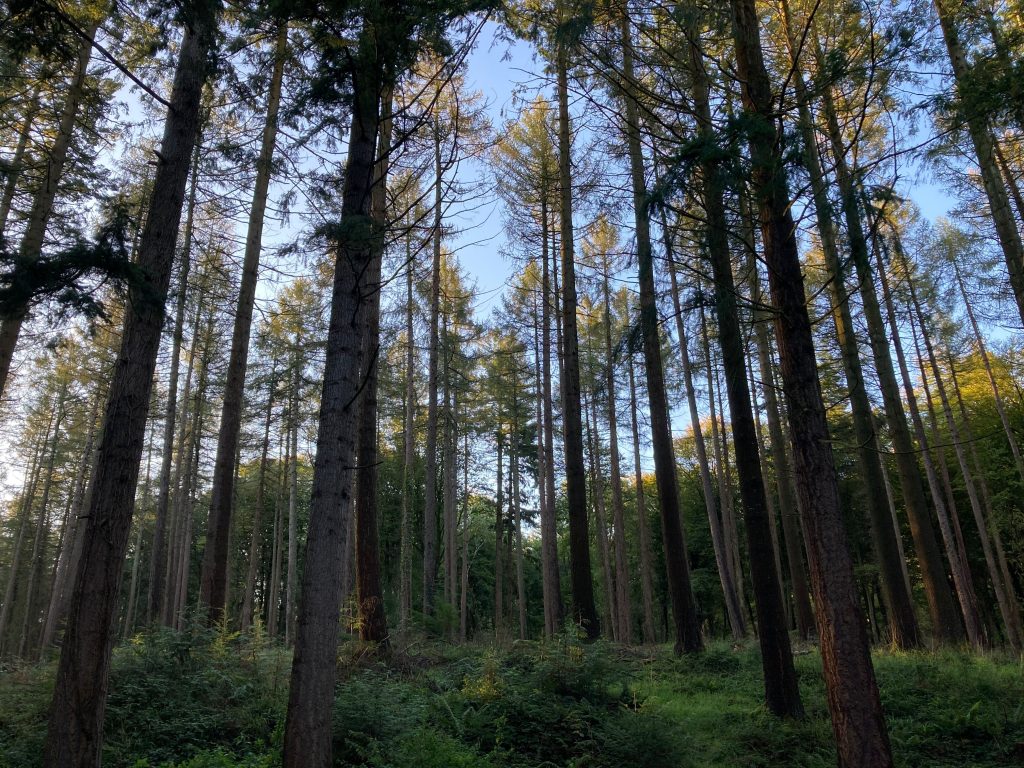Gary Newman makes the case for investing in planting trees for timber to reach carbon reduction targets in Wales.
AS COP26 draws to a close, many scientists and activists have been left with mixed feelings.
While encouraging words and side-agreements spark hope, research by Climate Action Tracker demonstrates that temperatures are still likely to rise 2.4-degrees Celsius during this century.
This is a long way from the 1.5-degree Celsius increase in temperature that we had hoped would prevent the worst effects of climate change – and is not the decisive government action that the world needed.
With the Global Carbon Project (GCP) update for 2021 revealing a much bigger rebound of CO2 emissions from fossil fuels and cement production post-pandemic (4.9%) than was expected, how can we change our built environment, from a carbon emitter to a carbon store, to help reduce global emissions?
What alternatives do we have in Wales to use our land for carbon sequestration and storage?
And what have Welsh forests and woodlands got to do with it?
The UK is the second largest importer of timber products in the world, after China. For far too long, we’ve been comfortable assuming that other countries will provide our timber. After all, the perception of Wales is that we are a steel, beef and dairy country, not a timber producing nation. Our cultural narrative is one of mountains and valleys, rather than abundant forests and the woodlands of Powys, the Borders and North Wales.
But with global demand for timber set to quadruple, is it sensible to assume that other parts of the world will continue to supply us with the material volumes we need – and at what price? What alternatives do we have in Wales to use our land for carbon sequestration and storage?
Making best use of valuable resources
Currently, only 15 per cent of Wales is covered in trees, against a continental European average of 37 per cent. Nonetheless, the existing Welsh forest grows enough timber of the right grade to create one new timber home every four minutes. That means it would take just 20 days to build 7,000 new homes – the number of new houses needed in Wales annually.
But only four per cent of the Welsh harvest finds its way into construction – which is the highest value and most environmentally beneficial use for timber, as confirmed by a recent research paper published in Nature Communications.
Instead, high quality Welsh timber is cut down and used for products such as fencing, pallets and garden sleepers – which are relatively low value products, with a much shorter lifespan.
Investing in those working with the land
Wales needs more housing – and better performing ones. High-performing timber homes can be constructed fast, at scale and at affordable cost. Welsh timber businesses – from sawmillers, to joiners, to housing manufacturers – are rooted in communities and have the potential to expand and innovate, thereby creating jobs for local people, especially in rural areas where they are needed.
Land must be suitable – and growing trees for timber needs to be commercially interesting, compared to other economic land uses that provide income to farmers and their communities.
But to date, Wales has built relatively little with timber. The demand to deliver energy-efficient, zero-carbon homes has meant an increase in timber construction, especially in the social housing sector. Now is time to invest in forestry in Wales so that we can grow the timber that future generations will need. The wet, warm Welsh climate and hilly landscape, make our country an excellent place to grow the kinds of trees needed to satisfy societal demands for timber.
Most land in Wales is owned by farmers: they are the key to our food supply and central to any increase in tree planting for timber. And the decision to invest in such activity is not to be taken lightly. Land must be suitable – and growing trees for timber needs to be commercially interesting, compared to other economic land uses that provide income to farmers and their communities.
In essence, we need to support farmers in assessing the economic and ecological impact of tree planting on their land – and in managing these future woodlands. Becoming a tree farmer requires knowledge and a different set of skills but is well within the abilities of people used to working with the land.
A call for collaboration across sectors and industries
If we want to turn our built environment from a carbon emitter into a carbon sink in Wales, we need all hands-on deck. From farmers and foresters to processors and manufacturers, to building developers and designers, and finally, to communities and residents.
That is what WoodKnowledge Wales and the Home-Grown Homes Project has been working towards since 2018.
Based on findings from the Home-Grown Homes Project, we have set out five essential strategies for Wales to embark on this transition journey.
We need support from across the entire political spectrum to achieve such transformative change – and we will require bold policies.
But what we still need most is action.
All articles published on the welsh agenda are subject to IWA’s disclaimer.





